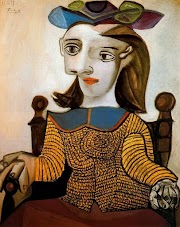Sofonisba Anguissola was a pioneering Italian Renaissance painter whose remarkable talent and determination carved a path for women in the arts during the 16th century. Born around 1532 in Cremona, Italy, she emerged as one of the first female artists to gain international acclaim. Her journey from a noble family to the courts of Spain exemplifies her exceptional skill and the shifting perceptions of women in art during the Renaissance.
 |
| Self-Portrait at a Spinet - Sofonisba Anguissola |
Early Life and Education
Growing up in a relatively poor noble family, This Italian painter - Anguissola received a comprehensive education that included the fine arts—a rarity for women of her time. Her father, Amilcare Anguissola, recognized her potential and arranged for her to apprentice with local painters Bernardino Campi and Bernardino Gatti. This apprenticeship set a precedent for women to be accepted as students of art, breaking societal norms and opening doors for future female artists.
Artistic Style and Influences
Anguissola's work is characterized by the delicate balance of Mannerism art characteristics and the emerging naturalism of the Renaissance. Mannerism, known for its elongated forms and complex compositions, is evident in her paintings. However, she infused her portraits with a warmth and realism that captured the essence of her subjects. This blend of styles contributed to the significance of Renaissance artwork during her era.
Notable Works and Achievements
Among her extensive portfolio, several pieces stand out:
- Self-Portrait at the Easel (1556): This painting showcases Anguissola painting the Madonna and Child, reflecting her devotion and skill. The self-portrait not only highlights her technical prowess but also serves as a statement of her identity as a professional artist.
- The Chess Game (1555): Depicting her sisters engaged in a game of chess, this work is celebrated for its lively composition and intimate portrayal of family life. It stands as one of Sofonisba Anguissola's most famous paintings.
- Portrait of Queen Elisabeth of Valois (1565): As the official court painter for Philip II of Spain, Anguissola created numerous portraits of the royal family, capturing their likenesses with grace and elegance.
Other art works
 |
| Portrait of Bianca Ponzoni Anguissola |
.jpg) |
Portrait of the Artist's Family (Sofonisba Anguissola) |
 |
Portrait of Bernardino Campi Painting Sofonisba Anguissola |
 |
Portrait of Massimiliano II Stampa |
Court Life and Later Years
In 1559, Anguissola was invited to the Spanish court as a lady-in-waiting and painter to Queen Elisabeth of Valois. During her 14-year tenure, she not only produced numerous portraits but also mentored the queen in painting. After leaving the court, she continued to paint and mentor young artists, leaving a lasting impact on the art community.
Legacy and Fun Facts
Anguissola's influence extended beyond her lifetime:
- Trailblazer for Women Artists: Her success paved the way for future female artists to pursue professional careers in art.
- Longevity: She lived to the age of 93, a remarkable feat for the time, allowing her to witness and contribute to significant artistic developments.
- Recognition by Michelangelo: Early in her career, Michelangelo praised her work, particularly her ability to capture the emotions of her subjects.





















0 Comments